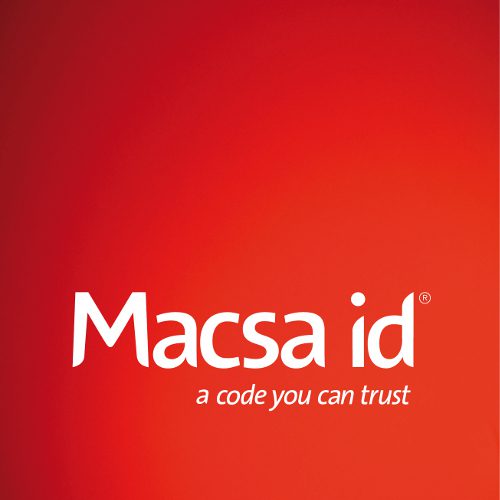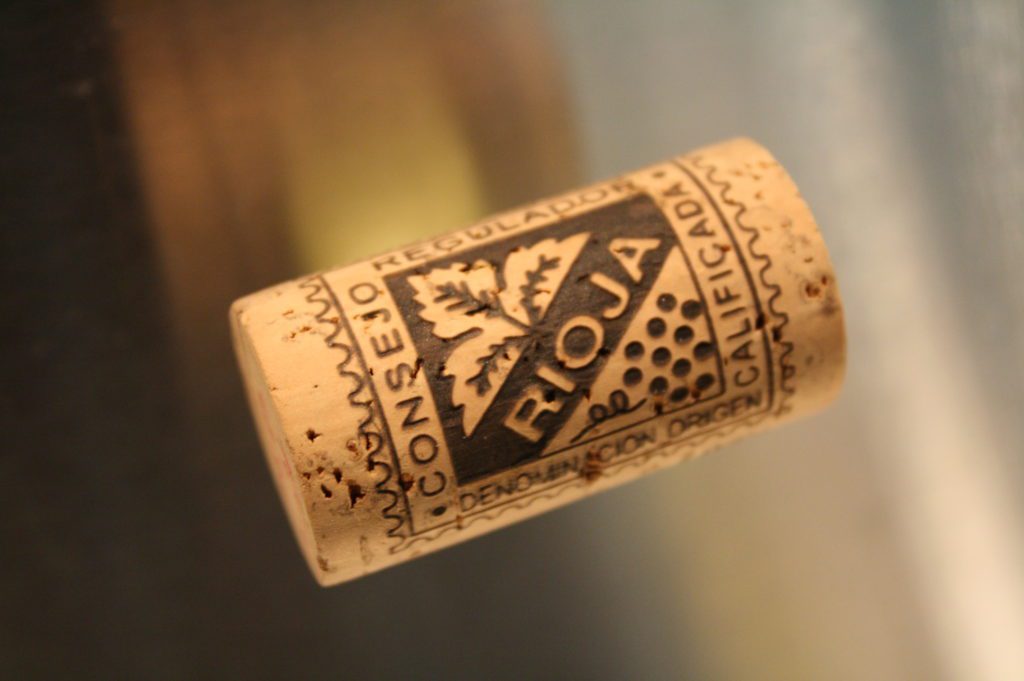
Laser marking of cork bottle stoppers
When you open a bottle of wine or champagne, have you ever wondered how the cork was marked?
Traditionally, this marking has primarily been done with two types of technology:
- Thermo-etching: marking by contact with a metal printing plate at high temperature.
- Pad printing: printing with a silicone pad that picks up the ink from a printing plate, which in this case is a low relief negative.
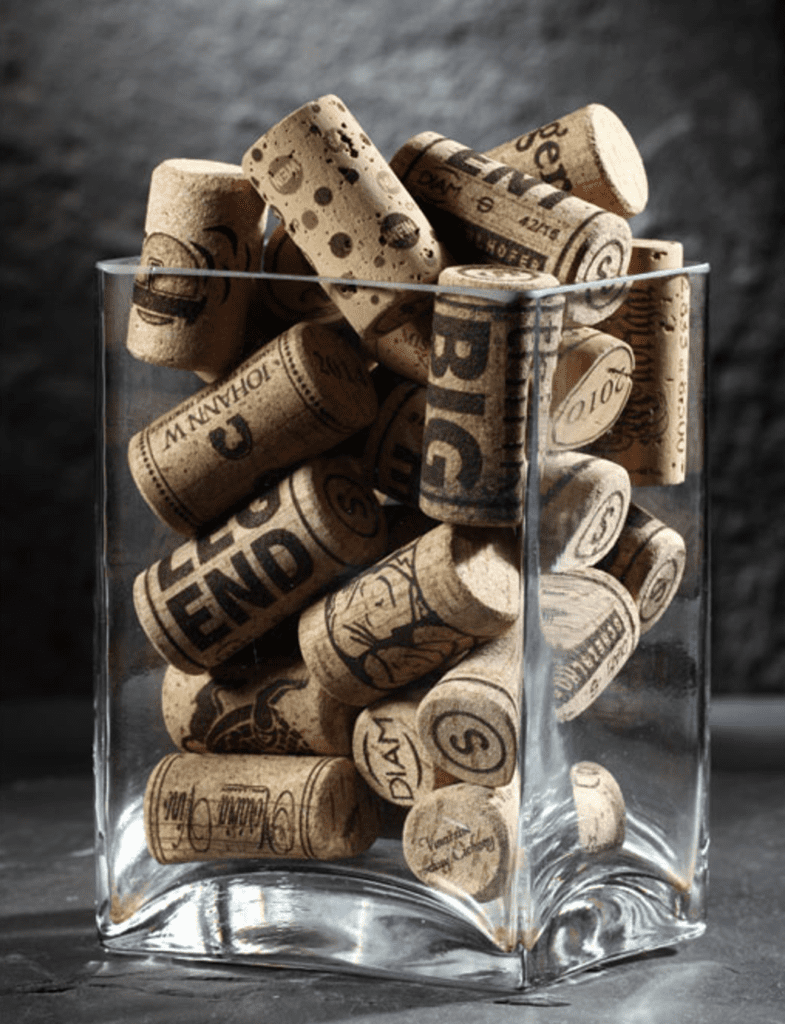
Both methods require the manufacture of a mold or printing plate, so this has a series of limiting factors:
- The cost of the printing plate increases the cost of smaller runs of a given product.
- The machining of a new design implies a change of printing plate, with the corresponding mechanical adjustment that this entails.
- Acid and/or other chemical products are usually used in printing plate manufacture, so these are not sustainable processes.
- The inks used for pad printing, even though they are for food use, involve the addition of other chemicals that can interfere with the taste of the packaged product.
- Individual customization of the stoppers is not possible. If the lot number or year needs to be added, or for any design change, we have to make a change to the printing plate.
What are the advantages of laser marking?
- The laser has the flexibility of being able to carry out short runs without any type of mechanical adjustments, since only the file that is being used for marking needs to be changed.
- No chemicals are used and the only by-product generated is smoke from the combustion of the cork.
- The corks can be customized by year, lot, date, or any other criteria, and can each be personalized individually.
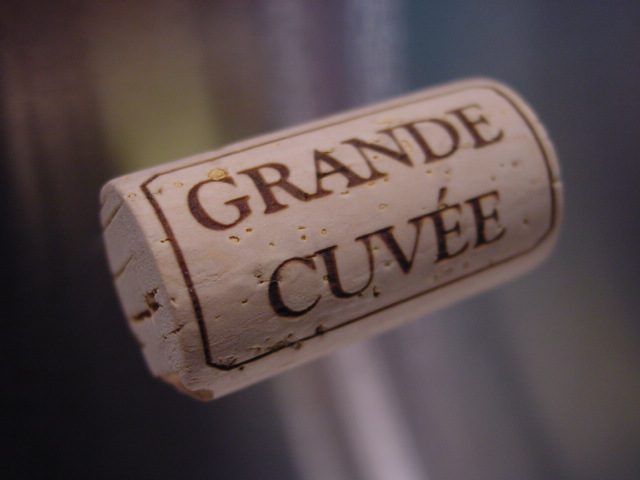
What should be taken into account to obtain optimal results quickly and easily?
Although cork stopper laser marking can be a quick and easy task, if we try to perform this task without knowing how to interpret the results or without the appropriate equipment, we may fail in the attempt.
The knowledge that will help us to improve the result is the following:
- The laser focus.
- The reaction of the material.
- How to apply this knowledge to improve the result?
To choose the right equipment, we must focus, above all, on 4 main aspects:
- Optical configuration.
- Mechanical response speed.
- Laser response speed.
- Software and control unit.
Do you want more information?
Laser focusing
Laser equipment has, among many other components, a lens. The laser beam passes through this lens, so that at a certain distance, known as focal length, it is totally focused. This means that it is the point where the laser beam has the smallest diameter, which is called spot size.
The smaller the spot size of a device, the higher the energy density, since we will be focusing the same amount of energy on a smaller surface, and we will also have the possibility of marking with higher definition.
Spot size
There are several factors that influence the spot size of a laser.
Focal length
Spot size is directly proportional to focal length, so if we use a lens with a focal length twice as long, we will have a spot diameter that is twice as large, and an energy density 4 times lower.
Beam diameter
Spot size is inversely proportional to laser size. If we double the laser diameter at the lens entrance, we will halve the spot size.
Laser focus factor (M2)
Laser source manufacturers provide a factor that tells us the focusing capability of the laser source, which is expressed as M2.
Spot size is inversely proportional to the M2 factor, so the minimum value it can have is 1, which would mean that the laser has an ideal focus. A laser with a factor of 1 would have the minimum spot size that can be obtained with the rest of the factors that affect the spot size.
This value is usually between 1.2 and 1.8.
Wavelength
The wavelength is the color of the light emitted by the laser source and is determined in units of length.
The magnitude of the light emitted by the laser sources used by Macsa ID ranges from 10.6 µm (0.0106mm) of a standard CO2 to 355nm (0.000355mm) of a UV laser.

Spot size is directly proportional to wavelength, so if we compare a CO2 laser and a fiber laser with the same beam size, focal length and M2, the spot size will be approximately 10 times smaller in the fiber laser than in the CO2 laser.
The reaction of the material
The fact that we have a certain theoretical spot size does not mean that this is the spot size that we can mark on a material, as there are other factors that influence this process.
The CO2 laser, which is used for marking on cork and in general for organic materials, generates contrast via a thermal reaction.
This thermal reaction usually affects an area larger than the diameter of the laser, which means a zone of thermal effect is generated around the marked area.
In addition, the combustion of the material generates smoke, which enlarges the area affected by the laser. This means that the area visually affected by a point marked with the laser (speaking on a microscopic scale) will usually be larger than the spot size of the laser.
Typically, the higher the energy required to achieve contrast on a material, the greater the difference between the theoretical laser spot size and the marking obtained.
How can this knowledge be applied to improve the result?
It is very important to choose the resolution according to the type of laser we are working with. Whether we use too high or too low a resolution, we can have problems with the result.

Fig. 1 Fig. 2 Fig. 3
Fig. 1. If we use a very low resolution, the detail of the marking will not be good.
Fig. 2 & 3. If the resolution is too high, we will lose detail due to the overlapping effect.
We have to know how the material reacts and adapt the design we are going to mark on the cork stopped according to that reaction. It is no use having a design with very fine details if the laser is not able to reproduce those details.
We have to adapt the design and laser configuration according to the type of marking we want to carry out:

If the design has a lot of detail in a negative area (Fig. 2), we must avoid using excessive power, since the details will burn.If the design has very fine details (Fig. 1), both power and resolution should be set to the maximum that the material will accept.
For photo-quality markings (Fig. 3), we should lower the resolution and adapt the power to avoid burning the halftones of the image.
Choosing a laser to mark cork stoppers
Firstly, there are two parameters between which it is necessary to find a balance:
- Small spot size: To achieve the best possible definition.
- Mechanical response speed: For optimal marking quality, the mechanics must be able to react as fast as possible, as they have to follow the marked design as precisely as possible while adapting to the displacement of the product.
DO YOU WANT TO SEE MORE INFORMATION?
To achieve a small spot size, we need to have as short a focal length as possible and for the diameter of the laser beam to be as large as possible before entering the lens.
We cannot use very short focal lengths, because, if we go below 100mm, we will have a very small working area. Moreover, the fact of working so close to a material such as cork that generates residue will make the lens very dirty, so we would have to perform maintenance very often.
Therefore, we must fully increase the size of the laser beam, but in order to do so we must increase the size of the mirrors, in a way that increases their mass and consequently the inertia. This means the response of the motors will be slower, so you have to find a balance between the two.
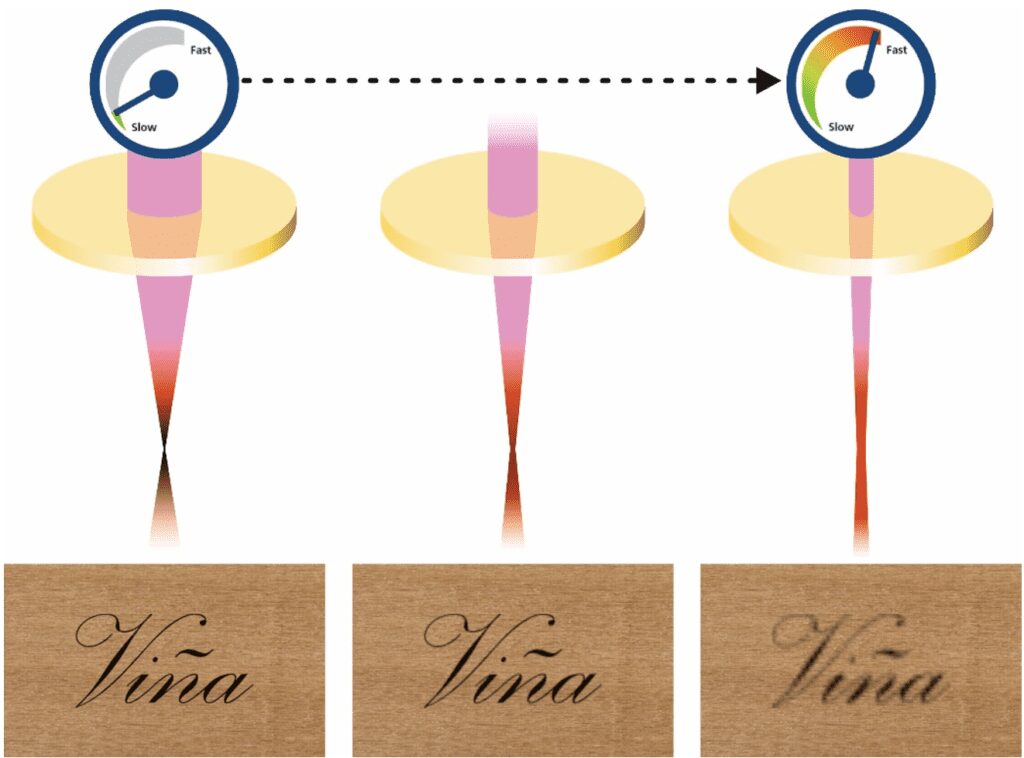
Within the Macsa ID product range, the new SPA 2 with 10mm mirrors and a response speed of approximately 200µs is the laser with the best compromise.
Laser response speed
In addition to having a good mechanical response, we need the laser source to have the same level of quality. It is of little use having excellent mechanical elements, if the source that is responsible for generating the laser is not capable of delivering.
If the laser response is not adequate, we will observe that the finer details of the design are lost, since the laser is not able to turn on and off at the required speed.
All Macsa CO2 laser equipment in the marking range is equipped with SynradTM laser tubes, a premium manufacturer that guarantees us to be up to par with the rest of the equipment.
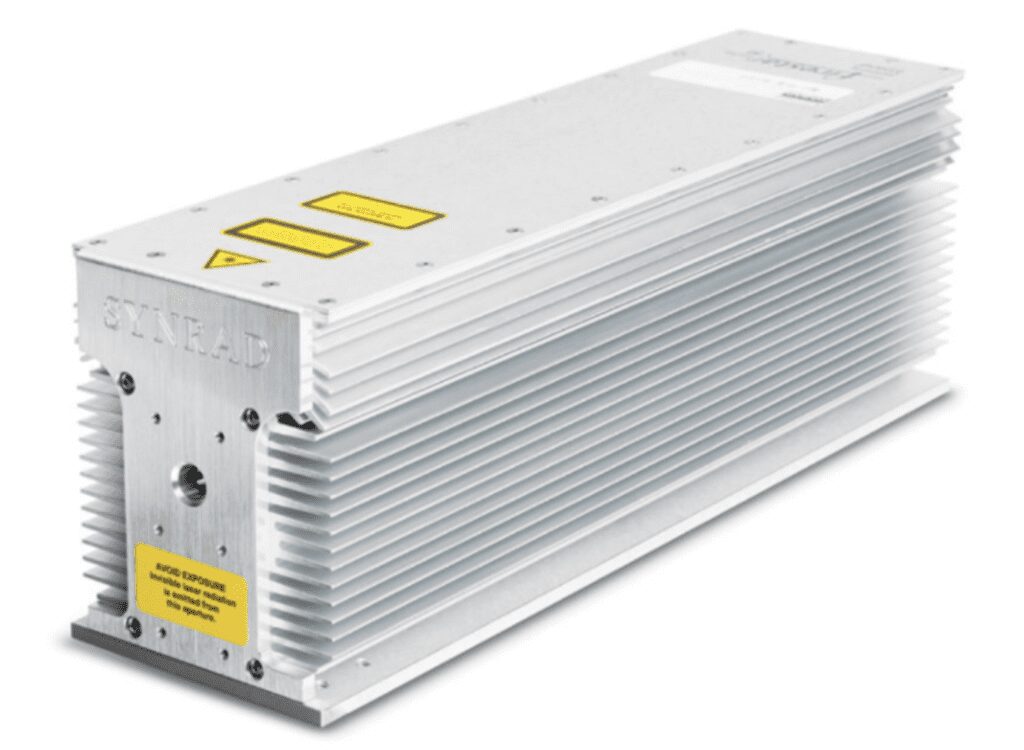
Software and control unit
Finally, although perhaps coming first place in terms of importance, we have the issue of software.
If we are looking for quality and speed, everything we have seen so far is useless if we do not have the software and a CPU capable of processing the data at the required speed.
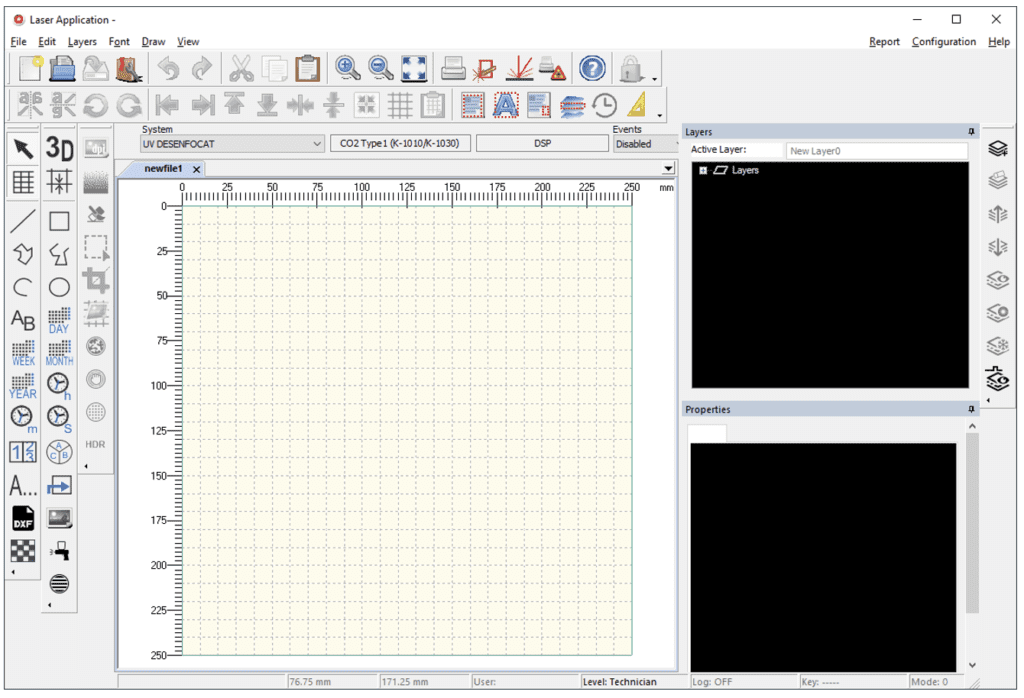
The equipment has to be able to control the rotation of the stoppers at the highest possible speed, adapting to changes in the design, and maintaining quality at all times.
To make sure that the software is able to fully optimize the process, it is important to test all types of designs, mixing areas with higher and lower workloads. This way we will see if it is able to adapt to changes without losing productivity or sacrificing quality.
At Macsa ID we pioneered the development of technology for moving product marking, and our software makes the most of these years of experience, so the tools available for this application are the most advanced in the market.

To get the most out of it, we also have various adaptable integration possibilities for customers that achieve maximum efficiency in product traceability.
Regarding the control hardware, our SPA 2 machines feature a dual-core CPU that allows us to offer the maximum processing power, ensuring the fastest response. In this way we achieve the best engraving quality without sacrificing productivity.

We will be happy to find the best solution for all of your needs.

